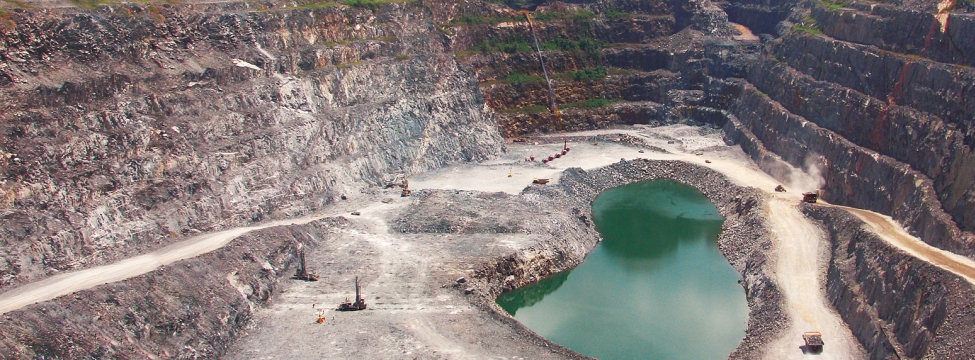To serve you better, our new website displays information specific to your location.
Please visit the site and bookmark it for future use.
Assessing geotechnical management using the Ground Blockiness Index (GBI)
Risk management and risk assessment are important processes, and should be applied to both the development of mining studies and the implementation of designs. SRK has completed a risk assessment as part of the cutback feasibility study and practical design for the Damang pit in Ghana.
For operational risk management, reliable field data needs to be collected. By using the Geotechnical Blockiness Index (GBI) in our field mapping, SRK applied a rapid rock mass characterisation tool to accelerate assessment at Damang.
The GBI concept, developed by Diane Walker and Ian de Bruyn of SRK (Perth) in 2006 classifies the rock mass according to 8 categories of block size and rock mass texture. It has the additional benefit that direct access to the face is not required.
Rock mass domains were derived from field observations, which were related to locations shown in the adjacent site plan. The location plan (left) shows the shows the principal East and West Wall domains as Good, Fair and Poor in green, yellow and red, respectively. The rock mass conditions were extrapolated where similar conditions were assessed as likely to be encountered. The approximate water level is shown by the light blue colored infill.
The Good rock zone comprises sandstone and, locally, dolerite, where it has been intruded along bedding structures. The domain fabric typically comprises large blocky to massive, very thin, widely-spaced bedding shears with occasional minor wedge or planar failure.
The Fair rock mass zone exposes the steeply dipping Damang Fault. The rock mass quality generally appears similar to the Good domain, although the presence of the fault provides a zone of persistent sub-vertical structural weakness.
The Poor domain corresponds to the zone where bedding shears and faults intersect with reduced block size, variable bedding dip and the flatter westerly dipping joints and shears.
The risk assessment incorporated the results of the GBI mapping with the Abosso Goldfields risk-assessment methodology. Geotechnical hazards were considered in terms of the consequences of slope failure. The principal hazards for the Damang Pit relate to the perceived instability of slope elements at decreasing scale (from the whole slope to an individual bench), including whether there was a ramp at risk, and according to slope material (oxide, weathered or unweathered rock).
The Damang cutback is generally situated within strong rock. Blockiness variability within the main pit walls represents an important structural control on bench performance. The approach adopted presents a robust field technique that allowed identification of common geotechnical domains, and categorisation and definition of risk mitigation measures.
Jeff Price: jprice@srk.com.au
|
You can download a PDF of the entire |
PDF
A4 |
PDF
Letter |
|
|
|
Our newsletters focus on specific areas of interest to earth resource professionals and clients. Each is available as an Adobe Acrobat PDF file. If you don't already have Adobe's PDF reader, you can download it free.
![]()


